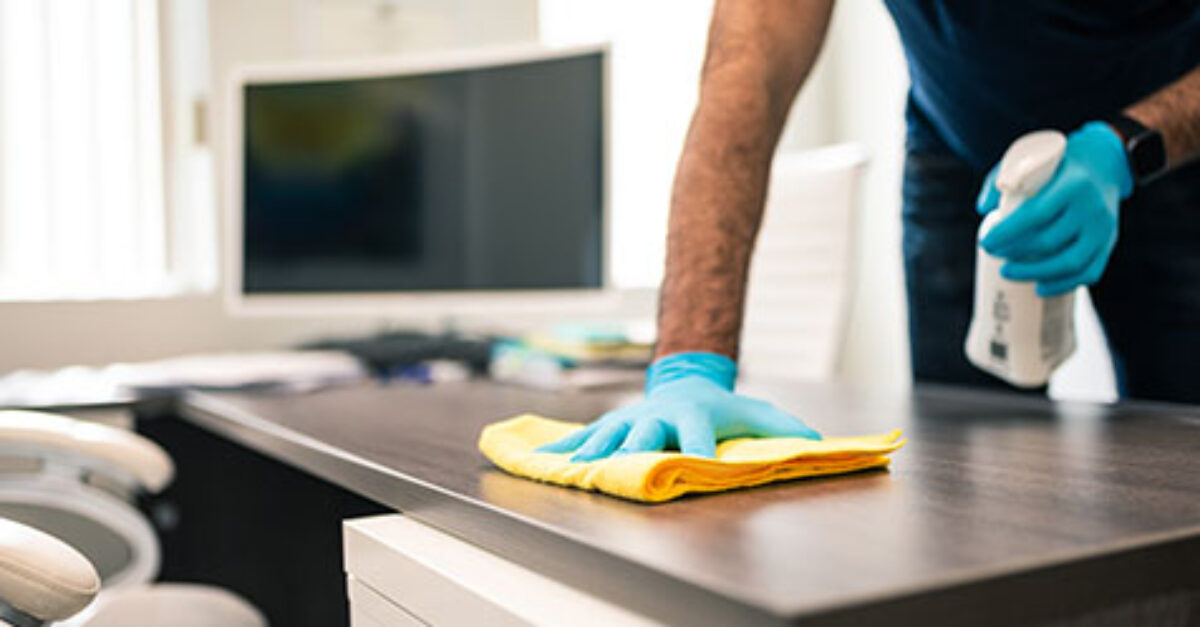The Very Best Everyday Cleaning Practices: Scrub the Surfaces, Vacuum Carpets, and Keep Clutter away
The Very Best Everyday Cleaning Practices: Scrub the Surfaces, Vacuum Carpets, and Keep Clutter away
Blog Article
Comprehending the Need for Extensively Sanitizing and Sanitizing Regularly Touched Surfaces in High-Traffic Areas
In the world of public health and wellness and safety and security, the meticulous sanitation and sanitization of frequently touched surface areas in high-traffic areas stand as vital measures in avoiding the spread of harmful virus. The significance of this method expands much beyond plain cleanliness, delving right into the world of disease avoidance and area well-being. By exploring the different elements of surface sanitation, from the threats related to overlooking cleansing procedures to the reliable approaches that can be employed, a clearer understanding arises of the vital duty these practices play in guarding public health and wellness. As we browse this conversation, it comes to be obvious that the effects of extensive surface area sanitation resound not only within the boundaries of a details setting yet additionally reverberate on a broader scale, affecting the health and wellness of individuals across diverse communal settings.
Significance of Surface Area Sanitation
Highlighting the comprehensive sanitation of high-traffic surface areas is critical in keeping a sanitary environment and protecting against the spread of dangerous virus. High-touch surface areas such as door deals with, light buttons, elevator switches, and kitchen counters serve as breeding grounds for viruses and microorganisms. Routine sanitation of these surfaces is imperative to lower the danger of contamination and transmission of ailments.
By carrying out a durable disinfection procedure, institutions and companies can create a much safer environment for site visitors, customers, and workers. Correct surface disinfection not only reduces the spread of transmittable diseases but additionally infuses confidence in the tidiness and safety and security of the facilities. This aggressive method demonstrates a dedication to wellness and wellness, which is specifically important in high-traffic areas where the probability of direct exposure to microorganisms is enhanced.
Moreover, surface disinfection plays an important role in general infection control methods. Integrated with hand health techniques, putting on masks, and preserving physical distancing, detailed sanitation of high-touch surface areas develops an extensive protection versus the transmission of dangerous microbes. Focusing on surface area sanitation is an important component of an alternative strategy to health and wellness in shared rooms.
Threats of Ignoring Cleaning Practices
Disregarding comprehensive disinfection of high-traffic surface areas dramatically enhances the danger of microbial and viral contamination, positioning a major risk to the health and wellness and safety of people often visiting these areas. Failure to implement proper cleaning methods can result in the build-up and spread of dangerous microorganisms, including infections and bacteria, on often touched surfaces such as doorknobs, hand rails, elevator buttons, and countertops.

In addition, overlooking the significance of thorough cleansing not just endangers the well-being of people however additionally weakens initiatives to preserve a tidy and hygienic setting. It is vital to recognize the significance of appropriate disinfection methods in avoiding the spread of infections and protecting public wellness.
Efficient Sanitation Techniques
To preserve ideal tidiness and lower the risk of contamination on high-traffic surfaces, employing efficient sanitation techniques is crucial. One of the most common and read review efficient disinfection techniques is making use of chemical anti-bacterials.
An additional reliable approach is using UV-C light. UV-C light has actually been revealed to be efficient in eliminating a large variety of bacteria by disrupting their DNA structure, thus stopping them from reproducing. However, it is important to utilize UV-C light my site correctly, guaranteeing that the right strength and exposure time are put on achieve the wanted disinfection results.
Furthermore, using heavy steam cleaning as a sanitation technique can be very efficient, specifically on surface areas that are heat-resistant. Vapor can penetrate permeable surfaces and kill microorganisms, viruses, and other microorganisms successfully. When making use of heavy steam cleansing, it is crucial to guarantee that the surface area reaches the called for temperature for an adequate amount of time to ensure correct disinfection.
Effect On Public Health And Wellness
The maintenance of high requirements of cleanliness and disinfection on high-traffic surface areas plays an important role in securing public wellness. Frequently touched surfaces in locations with high footfall, such as doorknobs, hand rails, lift buttons, and bathroom centers, serve as reproducing premises for hazardous microorganisms. Stopping working to adequately disinfect these surface areas can lead to the fast spread of infectious illness within areas. By implementing complete sanitation protocols, the risk of transmission of viruses, germs, and other bacteria can be dramatically decreased.
In high-traffic locations like airport terminals, institutions, hospitals, and public transportation systems, the influence of extensive disinfection actions can not be downplayed. Prioritizing Recommended Site the sanitization of frequently touched surfaces is an aggressive strategy to promoting public health and enhancing the security of individuals in common spaces.
Carrying Out Routine Cleaning Procedures
Promptly setting up and adhering to a consistent timetable of cleaning methods is critical for keeping the tidiness and security of high-traffic surfaces. Routine cleansing protocols are crucial in stopping the build-up of germs and virus on frequently touched surface areas, especially in areas with high foot website traffic. By executing an organized method to cleansing, organizations can efficiently decrease the danger of condition transmission and develop a much healthier environment for employees, consumers, and the public.
To develop a reliable cleaning schedule, it is vital to identify high-traffic areas that need regular focus. These locations may consist of doorknobs, hand rails, lift switches, restroom facilities, and shared devices. Applying a regular cleaning regimen that targets these surfaces several times a day can dramatically reduce the spread of hazardous germs and viruses.
In addition, making use of appropriate cleaner and disinfectants is essential to guaranteeing that surface areas are thoroughly sanitized. Regular training of cleaning staff on proper cleaning techniques and the significance of adherence to the cleaning schedule is also vital in maintaining a sanitary setting. By focusing on regular cleansing protocols, companies can promote the health and wellness and wellness of individuals who connect with these high-traffic surfaces.

Final Thought
Finally, it is critical to prioritize detailed sanitation and sanitization of frequently touched surfaces in high-traffic areas to prevent the spread of dangerous virus and maintain public health and wellness. Neglecting correct cleansing methods can boost the danger of contamination and transmission of conditions. By implementing routine cleansing protocols and utilizing reliable sanitation approaches, we can produce a more secure environment for everyone (Scrub the Surfaces). It is essential to recognize the importance of keeping tidy surface areas in high-traffic areas to guarantee the well-being of the neighborhood.
In the realm of public health and wellness and safety, the thorough disinfection and sanitization of frequently touched surface areas in high-traffic areas stand as critical measures in protecting against the spread of dangerous microorganisms. By exploring the numerous aspects of surface sanitation, from the risks linked with overlooking cleansing protocols to the reliable methods that can be used, a clearer understanding arises of the vital role these techniques play in protecting public wellness.Additionally, utilizing steam cleaning as a disinfection approach can be very effective, particularly on surface areas that are heat-resistant. When making use of heavy steam cleansing, it is important to make sure that the surface area reaches the needed temperature level for an enough amount of time to guarantee appropriate sanitation.
In conclusion, it is important to focus on comprehensive disinfection and sanitization of regularly touched surface areas in high-traffic locations to prevent the spread of dangerous virus and maintain public health.
Report this page